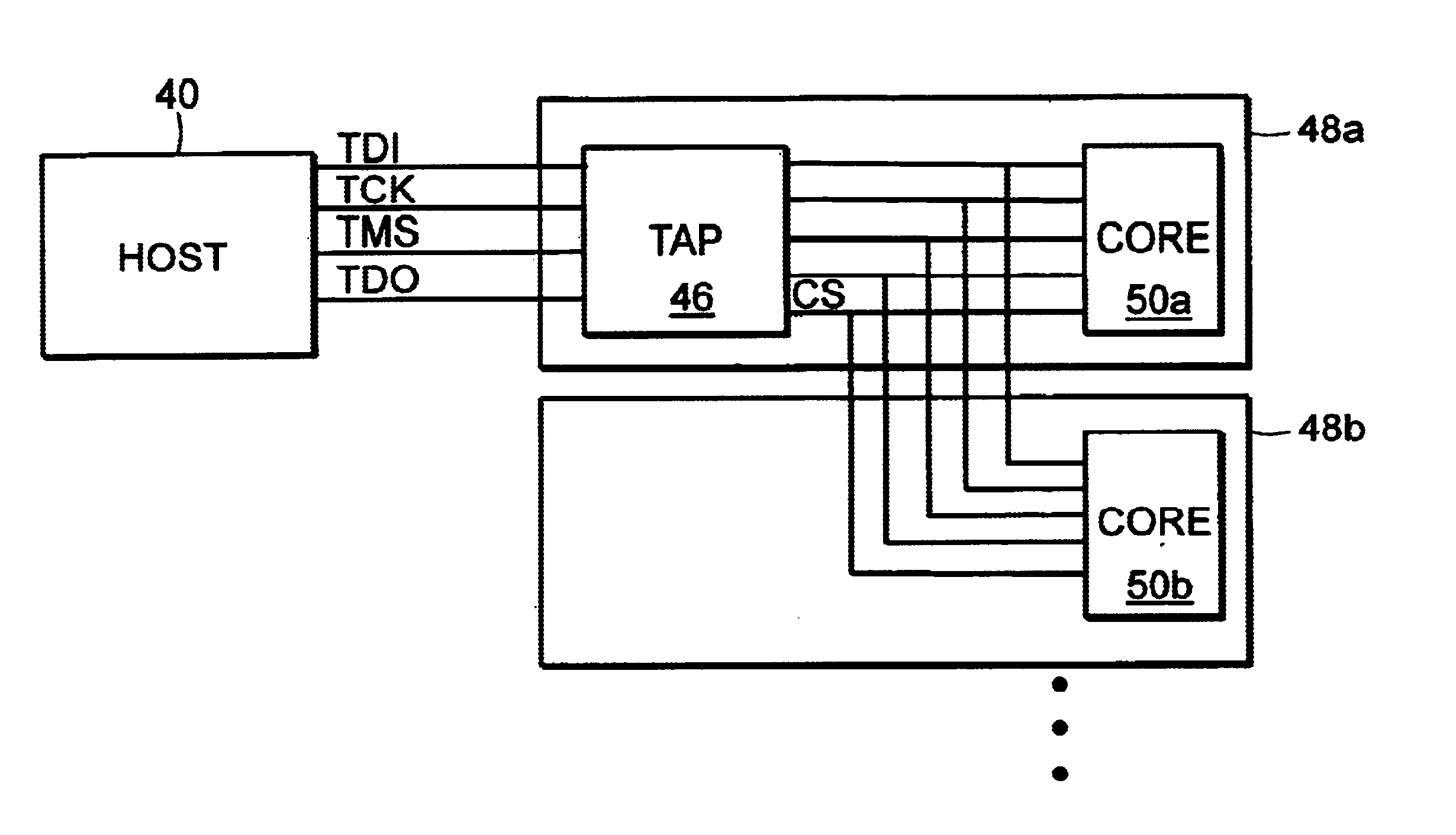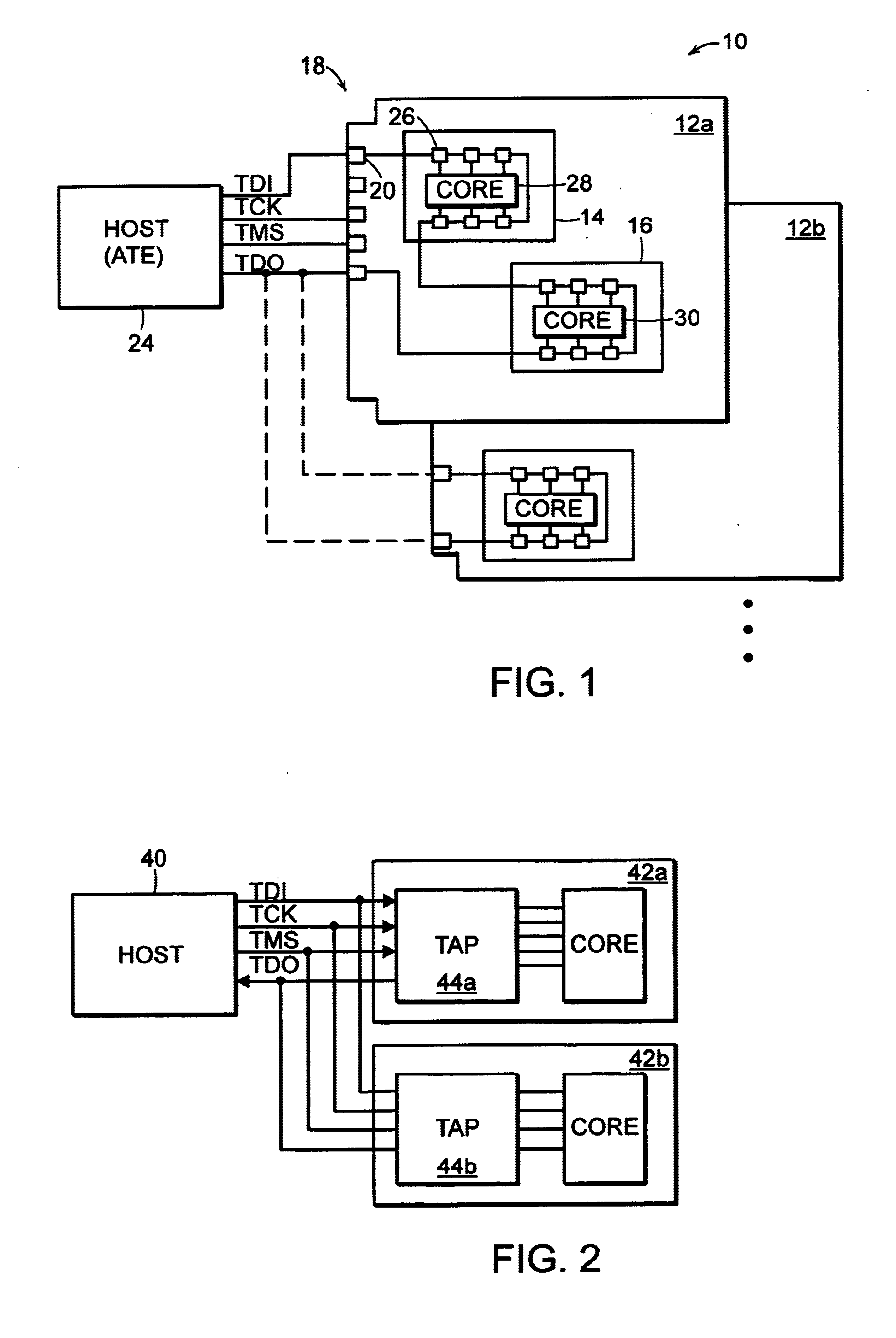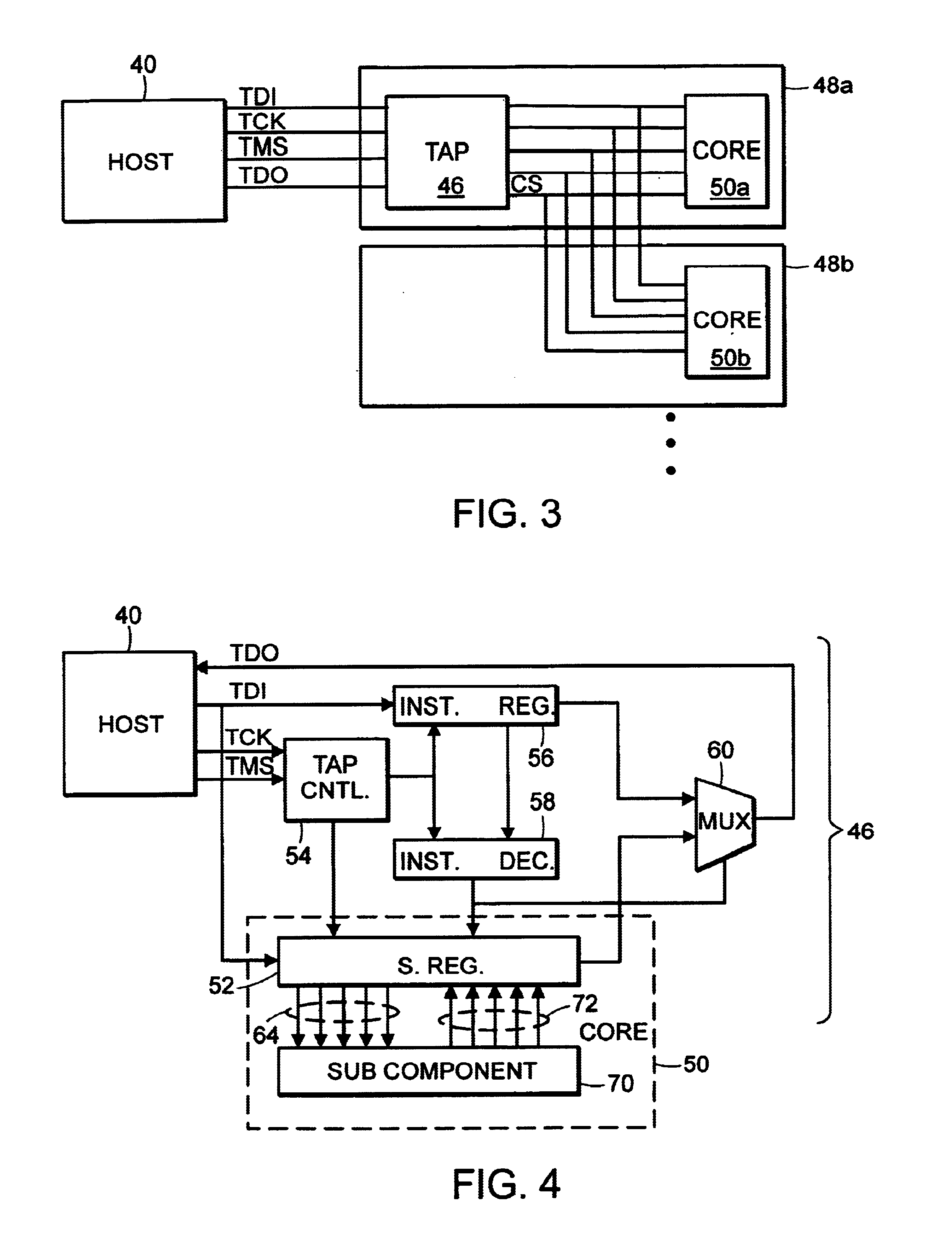Architecture, circuitry and method for controlling a subsystem through a JTAG access port
a subsystem and access port technology, applied in the direction of instruments, coding, code conversion, etc., can solve the problems that the shift register cannot be compatible with jtag and is not jtag complian
- Summary
- Abstract
- Description
- Claims
- Application Information
AI Technical Summary
Benefits of technology
Problems solved by technology
Method used
Image
Examples
Embodiment Construction
[0028]Turning now to the drawings, FIG. 2 illustrates a host computer 40 programmed to send and receive serial data to one or more integrated circuits 42a and 42b. The serial data sent from computer 40 is presented as the TDI signal to the integrated circuits either in parallel or in series. If delivered in series, TDI is sent first to integrated circuit 42a and then to integrated circuit 42b. Thus, TDI can be daisy-chained through the access port TAP 44a, then out of TAP 44a and into TAP 44b. The clock and mode select control signals TCK and TMS are broadcast to each of the TAPs 44a and 44b.
[0029]Preferably, the serial bitstream of TDI contains instructions and data sent as a sequence of bits that are formatted and controlled in accordance with the control signals which are dispatched by call routines to a JAM™ file to bring about IEEE Std. 1149.1 protocol. The IEEE Std. 1149.1 protocol assumes JTAG compatibility with integrated circuits 42a and 42b, and that TAPs 44a and 44b will...
PUM
 Login to View More
Login to View More Abstract
Description
Claims
Application Information
 Login to View More
Login to View More - R&D
- Intellectual Property
- Life Sciences
- Materials
- Tech Scout
- Unparalleled Data Quality
- Higher Quality Content
- 60% Fewer Hallucinations
Browse by: Latest US Patents, China's latest patents, Technical Efficacy Thesaurus, Application Domain, Technology Topic, Popular Technical Reports.
© 2025 PatSnap. All rights reserved.Legal|Privacy policy|Modern Slavery Act Transparency Statement|Sitemap|About US| Contact US: help@patsnap.com



